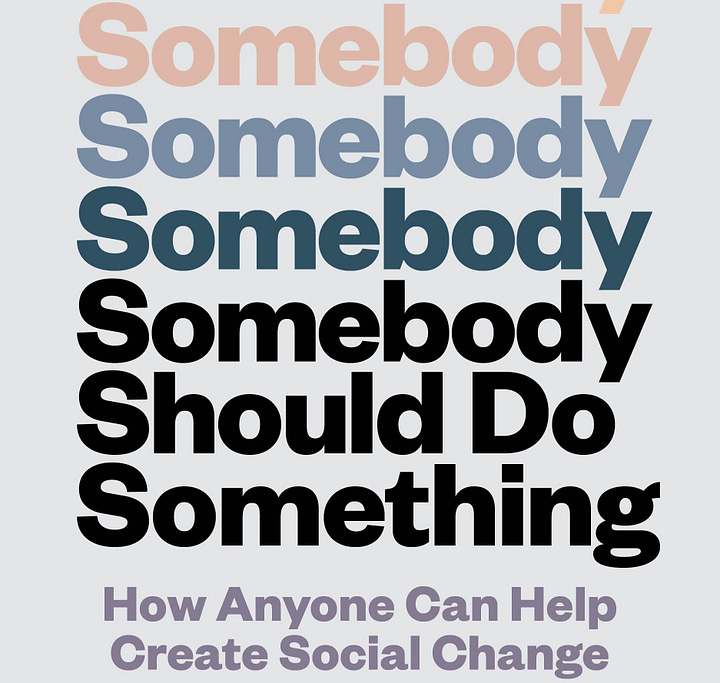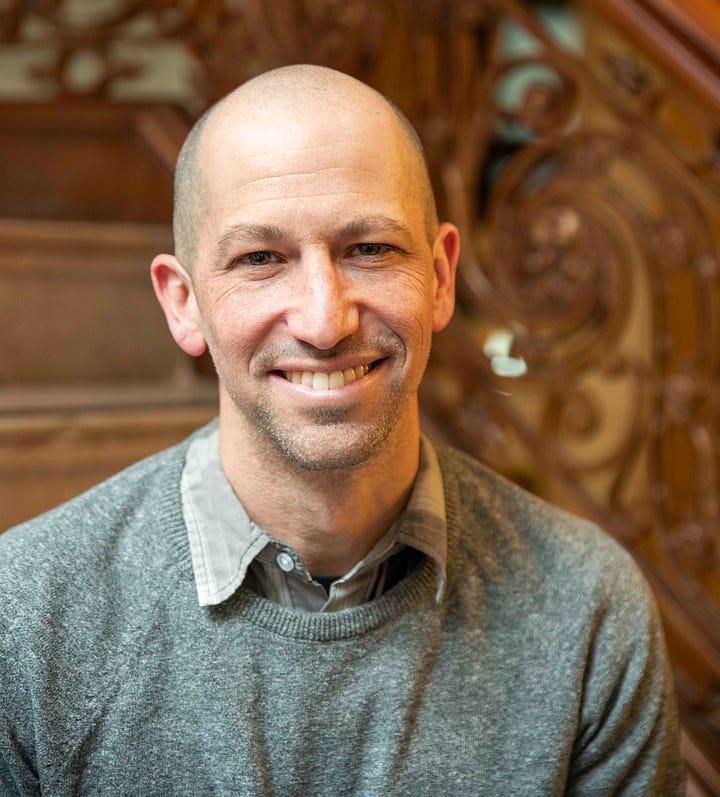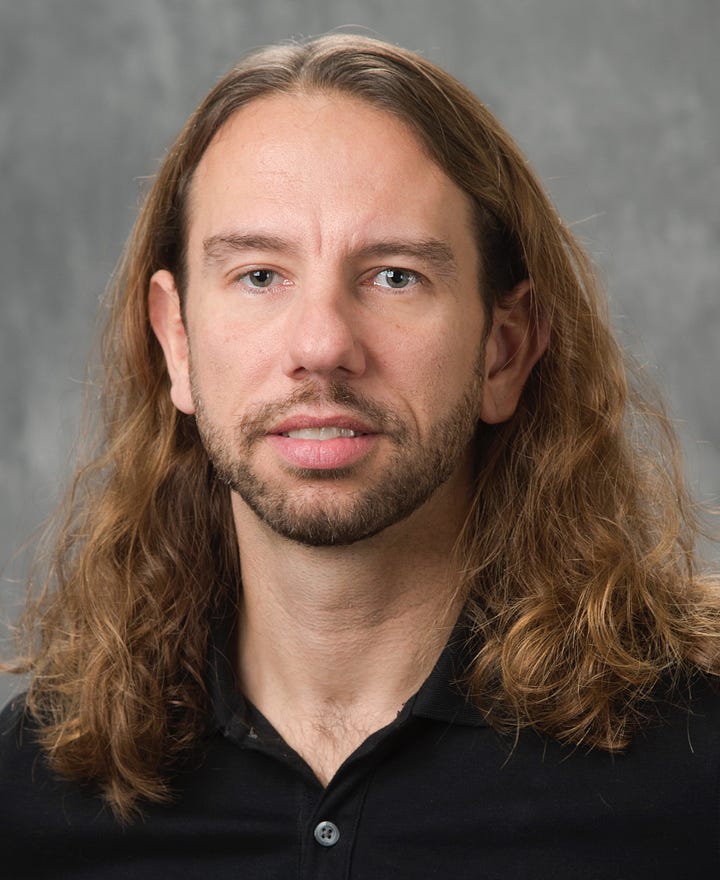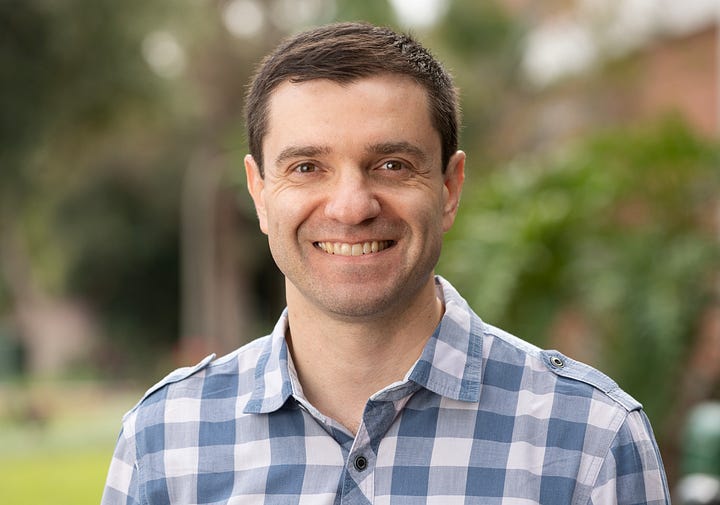Somebody Should Do Something
My interview with the authors of a new book on how to enact social change in troubled times




This post is an interview with the authors of the new book Somebody Should Do Something: How Anyone Can Help Create Social Change. The authors are Michael Brownstein, Professor and Chair of Philosophy at John Jay College (and a running buddy during our time together at Stanford’s CASBS, where he explored the ideas for this book), Dan Kelly, Professor of Philosophy at Purdue University, and Alex Madva, Professor of Philosophy and Director of the California Center for Ethics and Policy at Cal Poly Pomona. Their book, rooted in rich insights from contemporary social science and brought to life through an array of engaging stories, shows how real social change starts, spreads, and sticks. We are living in a challenging time defined by big problems like climate change, systematic inequality, and democratic erosion. It’s natural to want to do our part to make a difference, but also to feel helpless. This book walks us through how to navigate that and how to move to making positive change now, which is at the core of what motivates The Good Society. You can pre-order their book, which will be available September 16, for more.
1) Why did you write this book, and why do you think it’s important right now?
In the spring of 2012, the three of us sat together at a dinner during the very first philosophy conference on implicit bias at the University of Sheffield. We were on parallel intellectual journeys. All of us started off focused on understanding the mind and how it works, which led us to think about big-picture injustices in terms of the biases and prejudices inside the human head. Meanwhile, leading feminist and antiracist philosophers were arguing that this emphasis on individual bias was misplaced, a distraction from the underlying structural factors making the world unfair. We were moved by these criticisms but thought they went too far. The three of us agreed that we had to bring systems and structures into the picture without pushing individual minds out of it.
The right way to think about this stuff isn’t either/or but rather both/and. We came to see the “individual action” vs. “systemic change” debate playing out all over when it came to tackling tough issues related to climate change, racism, housing policy, diabetes, gun control, online misinformation, and so on. We wrote this book to show how that debate is misplaced and why we should turn to a more accurate and workable framework.
2) You make a compelling case in the book that individual choices matter for making important changes to address complex social problems like climate change or racism, but not in the ways we think. Can you explain?
Here are two lessons about “making a difference” that the three of us learned growing up.
(i) Each of us is only one person, we’re all just a drop in the bucket, but if everybody does their part, the bucket can fill up, and we can make a difference.
(ii) Big historical change is driven by villains and heroes, whether it’s Hitler vs. Churchill, Bull Connor vs. Martin Luther King, Jr., or CEOs of fossil fuel companies vs. Greta Thunberg.
Both ideas inform many people’s implicit picture of how social change happens. Either we settle for doing relatively insignificant things as mere individuals—drops in the bucket—or we hope and wait for a savoir to defeat the bad guys.
The core problem with both ideas is that they’re completely uninspiring. Far from motivating us to take action, they constrain our imagination for our capacities to contribute to making change. If we’re just a drop in the bucket—and the world’s problems constitute many buckets to fill—is it really worth the time? Especially when we have good reason to think most other people won’t step up, not anytime soon at least? Meanwhile, if what we really need is a Churchill or MLK or Greta to lead us out of the woods, we might as well do something else with our time while we wait, right?
Each idea has some truth to it, of course. There really is only so much each of us can do as solitary individuals. And effective leaders have been necessary for just about every major episode of intentional social change in history.
But there are better ways to think about this, and in our book we try to pull some of the best ones together. It assembles a bunch of tools for thinking about our roles in bringing about change, all grounded in history and social science. For starters, none of us are solitary individuals. We in the west in particular have a knack for underestimating how deeply humans are intertwined with each other, and thus underestimating how much potential to exert social influence we actually have.
For example, people are much more likely to quit smoking if their spouse quits, and smoking rates overall have declined in the USA as norms and expectations around it have changed. The economist Robert Frank makes a great point about this, which we echo in our book: the biggest danger of second-hand smoke isn’t that someone else’s cigarette might harm your lungs; it’s that people smoking in public creates more smokers, by making smoking seem normal and natural.
Similar lessons apply to social change. For example, college roommates have a large and lasting effect on each other’s voting behavior.
Now, there are two styles of thinking about the power of social influence. One way, which has been dominant in sociology and social psychology and neuroscience, emphasizes how our choices as individuals are shaped by those around us. In the book we talk about this in terms of the social situation as dominant: you quit smoking mainly because your spouse quits. But there’s another way of thinking about this, where you yourself are your spouse’s situation: your spouse might quit when you do!
So another of the ideas we explore in the book is how “my choices are your situation.” We can be effective agents of change even when we make what otherwise might seem like merely personal choices, like quitting smoking, taking up bicycle commuting, or attending a protest. When we do these things, we normalize them for others, shaping the incentives and culture that they make their so-called personal decisions within.
This is just one example—and there are many more in the book—that draws from what we see as a growing consensus in the sciences of the mind. We learn from each other; we imitate each other; we enforce norms on each other; we blame and praise and gossip about each other; we keep meticulous track of our own and each other’s reputations and statuses; we rely on each other. Social influence is the air we breathe. We are all, each of us, already agents of social change. Getting clearer on this points the way to being better, more effective ones.
3) What’s an example of people making concrete and important social change in the ways you outline in the book?
The book is packed with stories like this. Here’s one. After her daughter was killed by a drunk driver, Janice Lightner founded the organization that came to be known as MADD, or Mothers Against Drunk Driving. Without going into too many of the details, Lightner is probably one of the most successful agents of social change in recent American history. She started MADD in 1980. By 2005, 94% of Americans had heard of it, and social norms around drunk driving had changed dramatically. Alcohol-related traffic deaths decreased by 50% in the 25 years after MADD was formed, and by 83% by 2021 for drivers under 21. It seems clear that MADD was instrumental in this change. The group’s greatest success was probably lobbying the government to raise the national drinking age to 21. Lighter stood behind President Reagen when the bill was signed.
Drunk driving is terrible, of course, but why focus on this story? What’s distinctive is how Lightner and others combined an effort to change social structures—in this case, both federal law and social norms around drunk driving—with a clear focus on the role of individuals. Their theory of the case was to individualize the problem, to make drunk driving a matter of personal responsibility.
While we take issue with the fact that Lightner was capitalizing on Reagan- and Thatcher-era themes about blaming individuals for broader social problems, the point here is that Lightner was incredibly successful in creating change because she tapped into ordinary people’s attitudes and beliefs about the problem. So often, in the progressive pools in which the three of us swim, we hear people implore each other to focus on “systemic change” rather than “individual change,” like taking down the fossil fuel industry rather than fretting about your personal carbon footprint. But there’s no route to systemic change that doesn’t go through individual change too. If you’re going to take the fossil fuel industry down, there are crucial sets of people who need convincing. Moreover, those different sets of people are likely to be persuaded by different arguments. One challenge is how to persuade climate skeptics, another is to craft a message that appeals to financially motivated shareholders, not to mention crafting meme-able messages for media elites and winning messages for elected representatives; a still further set of challenges is how to motivate and activate people who are already persuaded about the ills of fossil fuels but doing nothing about it; and so on.
Emphatically, we are not saying “find someone to blame and build a coalition around demonizing them.” The point of the story is that systemic change and individual change are two sides of the same coin.
4) Political scientists and economists spend a lot of time studying institutions and systems and the reinforcing dynamics that perpetuate them. From that perspective, stability is an equilibrium and incremental changes seem marginal. Do you think that approach masks the fragility or change potential of these systems, or is the best we can hope for something like slow, evolutionary change?
Interesting! We explore a bunch of different types of cases in the book, including systems that seemed completely stable right until they transformed and systems that seemed malleable but didn’t budge despite decades of dedicated collective efforts. With a wide scope of cases in view, we don’t think the best we can hope for is slow, evolutionary change. Angus Deaton’s analysis of the Great Escape is a case in point. After largely incremental grinding improvements to quality of life through the first 300,000 years of humanity’s existence, the last 200 years have seen absolutely stunning progress around global life expectancy, literacy rates, and democratic institutions.
More recently, take LGBTQ rights: Given the amount of time activists had been fighting for LGBTQ rights, the change in norms, attitudes, and laws that took place in the span of a decade or two is jaw-dropping. The same can be said for the Civil Rights movement, the temperance movement, and the energy transition (or key aspects of it, at least). We have dithered for far too long in fighting climate change, and there is so much more to do than we are currently doing, but the price of renewable forms of energy like solar and wind has now declined dramatically faster than virtually every expert thought possible. This is how we got to the point where, for example, California—the world’s fourth largest economy—ran on clean energy for 219 days last year.
In the context of the amount of time people have put into these fights, success in making change really can seem like it happens in the blink of an eye.
One thing we do in the book is explore the dynamics of social feedback processes. We examine instances of negative feedback loops where perturbations to a system are absorbed and changes are incremental. And we examine positive feedback loops where seemingly minor changes reinforce themselves and spiral into larger scale structural change.
From our perspective, social and institutional durability can often be characterized in terms of negative feedback loops. Systems like these have a kind of internal balance that allows them to remain stable in the face of a variety of perturbations. But sometimes systems with this type of internal balance can be knocked out of their stable state, causing them to tip into positive feedback where changes, instead of being absorbed and counteracted, start to amplify and multiply each other, setting off cascades of more and bigger changes. When something like this is going to happen, and what happens when it does, is extremely hard to predict.
5) How has your own behavior been changed by what you learned in writing this book? Do you do anything differently now?
One thing we’ve learned is to simply talk more about our hopes, fears, questions, and plans with others. Pluralistic ignorance is a real problem. People don’t know how many people care about racism, climate change, etc. And we’ve really become convinced by the literature on the power people have to influence their friends, family, and co-workers, which often starts with the willingness to talk and brainstorm and do things together. Sometimes it can be as simple as, for example, saying why we’ve chosen to bike to work or eat less meat. The point isn’t that those choices are very significant in and of themselves. Rather, again, it’s that each of our choices shapes the social situation in which everyone else makes their choices.
On a more personal note, Michael is hoping to volunteer full-time next summer and fall to help Democrats build the kinds of coalitions we write about in the book, the kinds that will hopefully help them to win big time in the midterms. Alex is developing a new course at Cal Poly Pomona on The Philosophy of Social Change, where students pick a cause they want to fight for and then, in a scaffolded process, take a range of steps to support that cause, from writing a letter to an elected representative to organizing an event. And Dan has expanded the focus of his undergraduate teaching, and created a couple of courses designed to help students think about the challenges of social change and figuring out what they value and want to stand up for. He has also recently taken on the challenge of launching the new Cognition, Agency, and Intelligence Center at Purdue, and is working on another book on social norms, norm psychology, and norm change.
6) Where and how do you envision the biggest changes in issues like the climate crisis and racism happening?
One of the biggest realizations we had from our immersion in all this research on social change was how patchy our knowledge of this stuff is. The lesson we draw from that is we must all proceed with a healthy dose for epistemic humility.
Flashback to 2004. Let’s say you told us then that Congress would let its ban on assault weapons expire, and that there would be many, many mass shootings in the 20 years to follow, and that overwhelming majorities of Americans—including even a majority of Republican gun-owners—would prefer more gun regulations. If you foretold all that, we would have predicted more significant social change around gun control. And our predictions would be devastatingly wrong. We also didn’t predict the rapid decline in cost of renewable energies or the rapid rise and persistence of anti-vaccination beliefs. So, as a general rule, we’re staying out of the prediction business.
There are really two separate questions, then. One would be: where do we predict changes related to the climate and racism happening? We could speculate about this, but wouldn’t be too confident in our speculations. But another one is: where are some contexts where we can make a more conditional prediction: if groups of collected actors were to dedicate their efforts in a certain way, where could they get the biggest bang for their buck?
For climate, one idea is to focus on the material benefits of the energy transition for ordinary people, to play up how the transition will improve people’s lives. A renewables-based economy would make daily life cheaper, healthier, and it would be more equitable. Focusing on these benefits would stand in contrast to what activists have traditionally focused on: getting people to care about the climate crisis directly, often for moral reasons, or because they should be afraid of its effects.
Do we have strong evidence that this focus would pay off? No. Do we think it would be worth experimenting with? Definitely.

